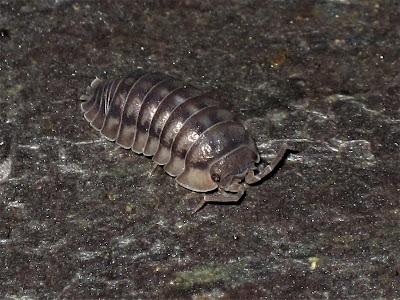The Home Garden: A Primer in Dysfunction
ALL TEXT AND PHOTOS © Marlene A. Condon
From
2002-2014, I gave monthly talks each summer in Shenandoah National Park. Most
of the questions after each talk were from gardeners wanting to know how to
prevent the trouble they encountered with this animal or that one.
At
first this situation puzzled me. I’d gardened throughout my adult life and never
encountered these many problems. I puzzled over it following each presentation,
until I realized people had these difficulties because they ignored the fact
that their gardens exist in the natural world. Thus, you have no choice but to
follow natural laws, as I had always done.
Unfortunately,
folks don’t like that answer. They want to continue doing their gardening in
whatever manner they please, as if the natural world is going to bend to their will.
Except it won’t. And therein lies the reason gardeners who ignore my philosophy
(as they would see it; I see it as presenting a fact of life) are doomed to rant
forevermore about various kinds of wildlife that are problematic for them.
So,
let’s look at just a few of the “truisms” in gardening lore that not only make
unnecessary work for the gardener, but are also detrimental to wildlife and the
environment.
As summer draws to a close and
fall arrives, gardening experts issue the same axiom year after year: Clean up your garden to keep pest problems
at a minimum. However, if you have a yard that’s wildlife friendly, this
task is totally unnecessary. It deprives many organisms of needed winter food
and cover, and over time, bankrupts the soil nutrition available for growing
plants.
While it’s true that some
insects overwinter as adults or eggs in plant stalks, it’s also true that many
animals will find these insects and eat them. Wrens and woodpeckers will come
to bird feeders to get sunflower seeds, but they mainly subsist upon insects
all the year around. They can be in big trouble if we have a harsh winter with
lots of snow. But, if you leave plants standing, especially tall ones, these
birds gain a better chance of surviving because they may find insects or their
eggs on the stems rising above snow level.
Deer Mice also eat insects.
While you probably care more about birds than these mammals—thinking all rodents
are “pests”—consider that mice help to replant our forests and grasslands. They
are Mother Nature’s gardeners, carrying seeds back to their nests and dropping
some along the way that may then grow where they fell.
It’s easy to overlook the
fact that every creature does its part to keep the other parts of the ecosystem
functioning properly, but humans need to recognize this actuality. Even though
you don’t want mice in your house, you should certainly welcome them outdoors,
and not only because they are inadvertent gardeners. Mice are a prime food
source for owls, foxes, and coyotes.
A gardening myth is that you must
keep your plants totally “bug-free”
to keep them healthy. Healthy plants can withstand a few insects chewing or
sucking on them. Remember, plants exist to feed animals (“Marlene’s Axiom”).
There’s no need to run for insecticide at the first sign of a few six-legged
critters, especially as many of these insects will be eaten if you’ve created a
yard that welcomes predators.
For example, many gardeners
worry about aphids, yet they are unlikely to cause significant damage in a yard
full of birds. Hummingbirds, especially, require such tiny insects to obtain protein
and fat for good health. Remove aphids and you remove a significant food source
for these energetic creatures.
You’ve probably also heard
that you shouldn’t allow your plants to go to seed. According to Penn State
Extension: “When dead blooms are left clinging to flowering plants, they sap
the nutrition and strength from the core of the plants and rob them of the
energy to produce new and colorful blooms.”
https://extension.psu.edu/to-deadhead-or-not-your-final-answer-is
Nonsense! A plant’s ultimate
“goal” is to reproduce, so it’s well adapted to making seeds and continuing to
bloom (if in its DNA) and grow each year. Spend time deadheading (removing all
“spent” blooms) and you perform busywork that deprives your local wildlife of seeds.
Lastly, anywhere you plan to cover
bare ground with mulch, you should instead let some “weeds” grow. They serve as
your natural mulch. Rather than stealing water, they keep the ground shaded to
prevent moisture loss, and many turn into lovely flowers that provide beauty
for the gardener, nectar for hummingbirds, butterflies, and/or numerous other
kinds of insects, and possibly seeds for birds and small mammals when left standing
throughout fall and winter.
Save time and energy by gardening
in a more relaxed manner, and you’ll help our wildlife while you’re at it. Your
reward will be the opportunity to watch nature at work instead of you!
Instead of taking away the fallen leaves of woody plants, you really should rake them around the main stem and out to the limit of the plant’s branches. Shrubs and trees provide their own mulch free of charge. The leaves they drop are Mother Nature’s way of returning “borrowed” nutrients to the soil (when the leaves decompose) from which they came.
If you prefer the
look of woody mulch, keep the spent leaves and just place the woody mulch over
them. But remember: The woody mulch needs to decompose (all organic matter is
supposed to be recycled in nature), so if you see mushrooms or other kinds of
fungi growing upon the mulch, leave them be! They won’t be visible long, and these decomposers are doing their job of returning nutrients to the soil so you don’t need to spend
money, time, and effort fertilizing your growing plants.



.JPG)
No comments:
Post a Comment